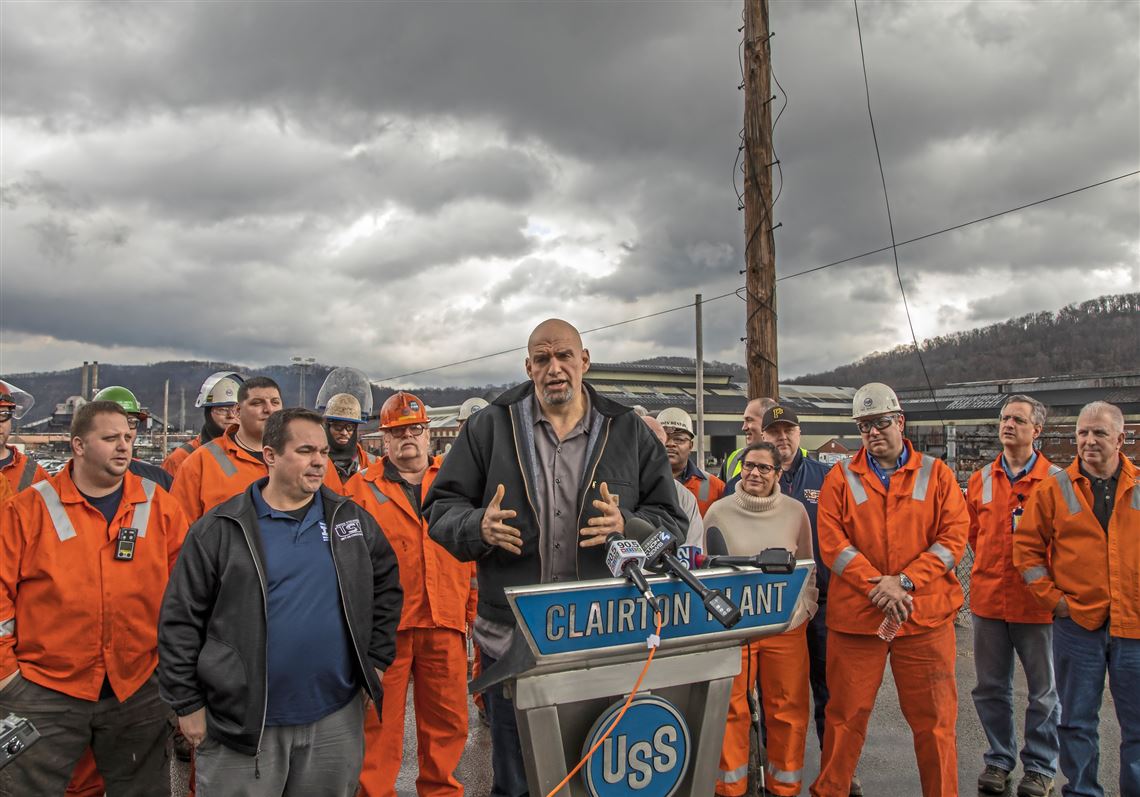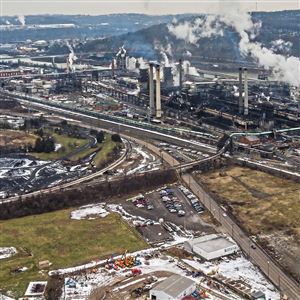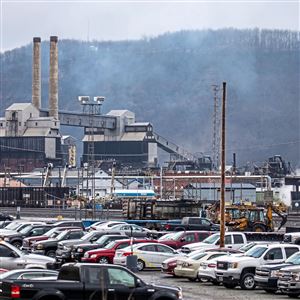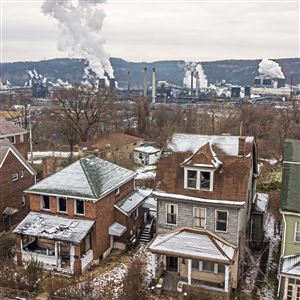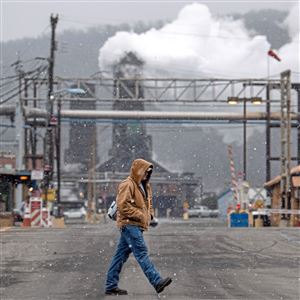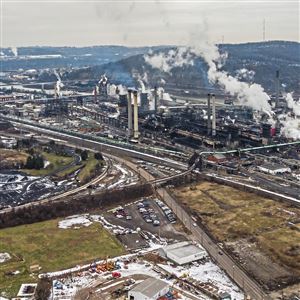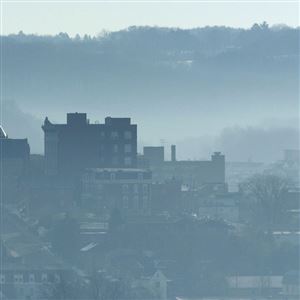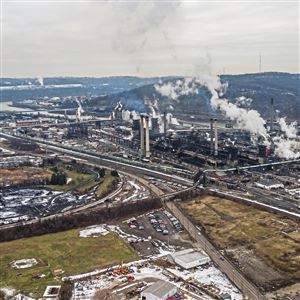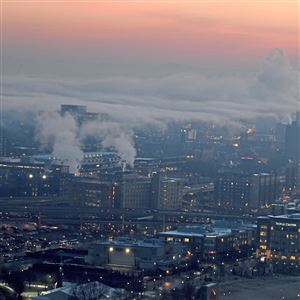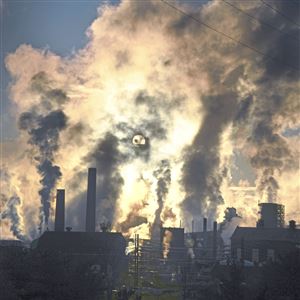Pennsylvania Lt. Gov. John Fetterman, fresh from a Friday morning tour of the fire-damaged pollution control system at U.S. Steel’s Clairton Coke Works, cheered the ongoing fixes at a facility he said is central to the Mon Valley economy.
Mr. Fetterman, who was Braddock’s mayor for 13 years and still lives with his family in that Mon Valley community near the steelmaker’s Edgar Thomson plant, said he saw “catastrophic damage” in the football field-sized building where the massive fire broke out and burned for five hours on the morning of Dec. 24.
“This is a facility that sustained an enormous amount of damage from what was a gigantic fire,” Mr. Fetterman said at a rain-sprinkled news conference in the parking lot of the coke works’ State Street gate after his private tour. “It needs to be rebuilt to the highest environmental standards and that’s the commitment.”
Environmental organizations and some Clairton residents have been critical of the high emissions from the plant since the fire, including nine exceedances of the federal Clean Air Act standards for sulfur dioxide. They’ve called on the Allegheny County Health Department to order the steelmaker to idle the coke batteries until repairs to the gas system are finished, and Thursday the Clean Air Council and PennEnvironment filed the required 60-day notice of intent to sue the company over the high pollution levels.
The health department issued a health advisory Jan. 9 for 22 Mon Valley communities, urging residents with respiratory and heart conditions, the elderly and children to limit outdoor activity. It remains in effect.
Mr. Fetterman said the sulfur dioxide exceedances were a rare occurrence that the company is working hard to eliminate.
“It’s just [a few] hourly exceedances out of 1,300 hours since the fire,” he said. “This plant is operating under new, stringent emissions guidelines. The environment is a priority, as is the welfare of its workers. It’s done the best anyone could expect.”
Mr. Fetterman said the continued operation of the plant was “critical to the communities.”
U.S. Steel has said that putting the coking facility on “hot idle” is a multi-month process that would take longer to accomplish than the ongoing repairs to the coke gas desulfurization system.
Mike Rhodes, Clairton plant manager, said the repairs have been going well, and the company is on track to begin a partial restart of the equipment by mid-May.
Ed Ley, a steamfitter for 43 years and a contract manager at the coke works who is working on the repair project, said the repair and replacement work is progressing smoothly.
“It’s starting to come together,” Mr. Ley said while he and about 30 plant workers waited for Mr. Fetterman to speak. “Everyone here is fully committed to the mission. Now it depends on the vendors.”
Mr. Rhodes said that while the repairs are underway, the company is flaring 60 to 65 percent of the coke oven gas normally used to heat operations at Clairton, Edgar Thomson and Irvin, three plants collectively known as the U.S. Steel’s Mon Valley Works.
He also said that coke baking times have been extended to reduce the amount of gas produced. As a result, he said, the facility is producing 17 or 18 percent less coke.
Clairton is the largest coking facility in the U.S., producing about 4.3 million tons a year in its 10 coke batteries and 708 coke ovens. Coke is an essential ingredient in the iron and steel making process.
Located along a bend of the Monongahela River about 20 miles south of Pittsburgh, the coke plant has a long history of air pollution problems and has paid more than $4 million in penalties under terms of six enforcement actions.
Additionally, the company is appealing two fines totaling more than $1.6 million levied by the health department last year. One of those enforcement actions would, for the first time, require the company to idle two coke oven batteries if its efforts to reduce fugitive emissions are unsuccessful.
Don Hopey: dhopey@post-gazette.com, 412-263-1983, or on Twitter @donhopey.
Correction (posted at 12:20 p.m., Feb. 17): In a quote by Mr. Fetterman about sulfur dioxide exceedances, he said 1,300 hours had passed since the fire. An earlier version of this story incorrectly stated that number.
First Published: February 15, 2019, 5:54 p.m.
Updated: February 15, 2019, 11:28 p.m.







